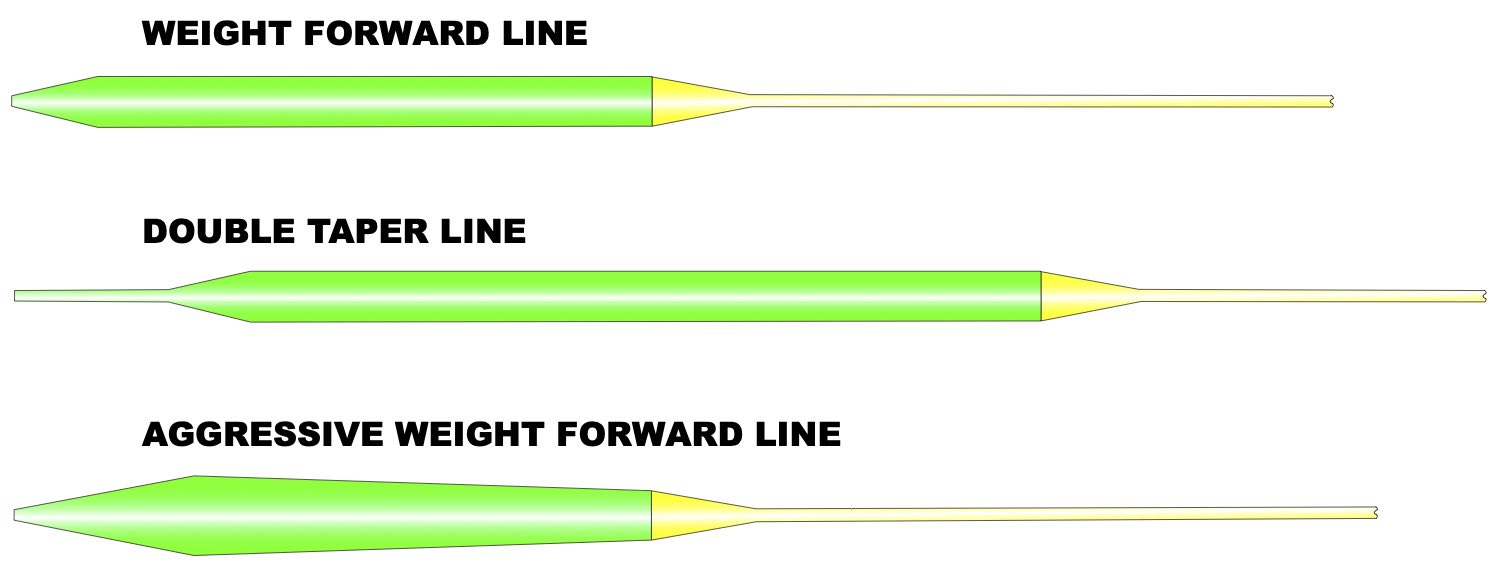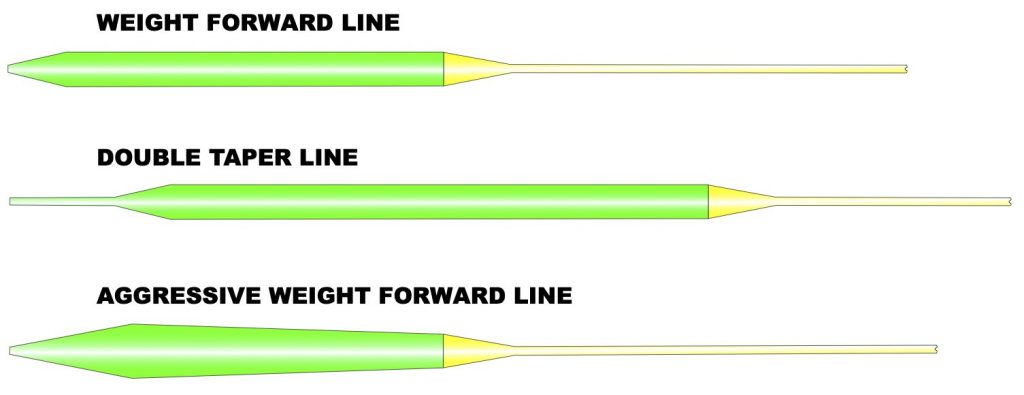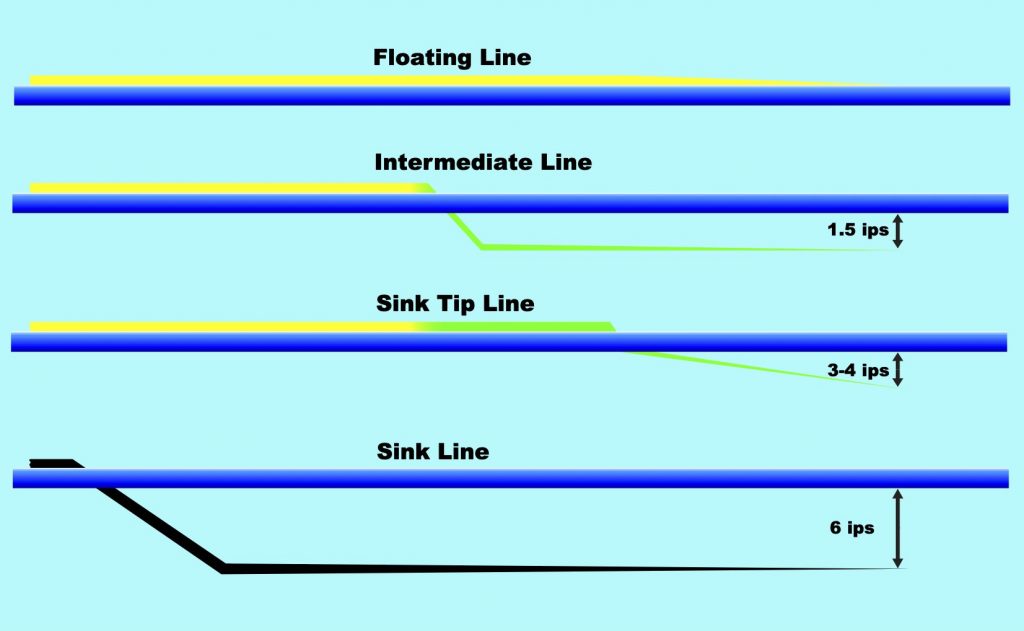
Fly Line types can be very confusing, so here’s a guide for those new to fly fishing to help you understand what they are all for.
Fly Lines are made with an inner braided core or mono core that gives the line it’s strength and has a plastic outer coating mainly made from PVC. Depending on that outer coating the line will either float, sink slowly or sink faster. It’s the weight of the line that allows us to cast it. Where the weight is situated is controlled by the line taper; a fine tip section to allow for delicate presentations, a thicker middle section with the weight for casting and a long tail section (running line) helps the line slide through the rod guides and gain distance.

A Weight Forward (WF)
fly line as the name suggests has more weight in the front half of the line hence it casts better in windy conditions, short casts and also will cast longer distances. Some are designed for delicate presentations while others for distance. So the WF lines are used for most general fly fishing situations.
A Double Taper (DT)
has the weight in the middle, with a longer fine tip section that allows for delicate presentations. The back half of the line is the same as the front half, so the line can be reversed which doubles the life of the fly line. They are best suited to smaller streams where delicate presentations are required.
The Aggressive Weight Forward
fly line is similar to a WF line as in the weight is set to the front of the head, but with the aggressive WF lines, the head has extra weight in a short area that can punch out big Pike flies without much effort.

Floating (WFxF):
These are the most common type of line used and can be used for a wide variety of fly fishing. It’s the materials used in the coating of a floating line gives them their buoyancy.
Intermediate (WFxI):
fly line will sink at a relatively slow rate. Intermediate fly lines are ideal where you want your fly to sink slowly, with the fly line slowly settling into the water column. An Intermediate fly line will sink at 1.5 inches per second are used when fishing lakes that have lots of weeds, and you want to keep the fly just above the weed. And also has applications when fishing rivers to aid sinking your flies to a medium depth.
Sink Tip (WFxF/I):
fly lines have tip sections that sink at the same rate as an intermediate line, while the head/running line float. Sink-tip lines can muscle big flies around and get them down to where they need to be.
Fast Sink (WFxS):
will sink quickly at a uniform rate as indicated on its box in inches per second (ips). Fast sinking lines will sink from 3 to up to 7 or more inches per second. Which sinking line is best really depends on how you want to use it, how far down you need to get your fly and how quickly you want to get it there. In fast moving water or really deep pools, a fast sink rate will be needed. Otherwise, a slow sinking rate will generally work well, and they are easier to pick up and retrieve than the fast sinking lines.

